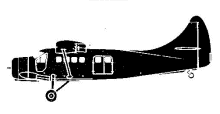Incident Overview
Description
Allied Air Flight 111, a Boeing 727-221 Cargo aircraft, departed Lagos-Murtala Muhammed International Airport in Nigeria at 18:28 hours local time. Destination was Abidjan, Ivory Coast, with a stop at Accra-Kotoka International Airport. On the descent into Accra, the aircraft was cleared by Accra Approach initially to FL050 and later cleared to 2000ft. It was again instructed to climb to 3000ft due to high ground. On arrival at Accra, the captain flew an Instrument Landing System (ILS) coupled approach, until he saw the runway. He then disconnected the autopilot at 500ft and manually flew the aircraft. After disconnecting the auto-pilot, he came into heavy IMC conditions in rain. The aircraft experienced an unstable approach at a high speed of 167kts and landed with a wind of 050/15kts at an airspeed of 154kts and about 5807ft from the threshold of runway 21 and 4000ft from the threshold of the runway 03 in nil visibility. The crew deployed thrust reversers and applied the normal brakes as well as the emergency pneumatic brakes but these actions were ineffective to stop the aircraft. Normally deploying the thrust reversers or applying the brakes would bring the nose wheel down. However, the nose gear was kept up. The speed brakes were not deployed. The crew reported seeing red lights rushing towards them soon after the main wheels touched the ground for the landing run. The aircraft overran the runway and destroyed the threshold lights and the approach lights on runway 03. It knocked out the ILS Localizer transmitter structure and mounts, broke through the airport perimeter wall. The aircraft crossed Giffard Road, collided with a Mercedes-Benz TN 207 minivan killing all ten persons on board. It uprooted a tree by the road side before finally coming to a stop at an open space near El-Wak Sport Stadium. The right side of a taxi cab on the road was grazed by flying debris from the localizer transmitter structures carried along by the right wing of the aircraft. The leading edge of the wing was extensively damaged. The aircraft came to a rest outside the airport perimeter wall 1171ft (350m) from the threshold of runway 03. The probable causes of the accident were: The decision of the Captain to continue with the landing instead of aborting at the missed approach point especially when he could hardly see through the windshield and when he did not know how far he had gone down the runway because of the rain and the tail wind components. Contributory factors: a. the Captain disconnected the auto-pilot and flew the aircraft manually in an unstable approach. b. the Captain landed the aircraft at 4000ft to the threshold of Runway 03, 6060ft from Runway 21. He could not stop within the available distance. c. the Captain chose to land with a tailwind of 050/15Kts in excess of maximum allowable tailwind of 10Kts. d. the crew concentrated on tracking the Localizer rather than watching for threshold and runway edge lights. They suffered from fixation. e. the Captain did not deploy speed brakes on landing.
Source of Information
http://www.ghanaweb.com/GhanaHomePage/NewsArchive/artikel.php?ID=240848http://www.ghanaweb.com/GhanaHomePage/NewsArchive/artikel.php?ID=240848Share on:




